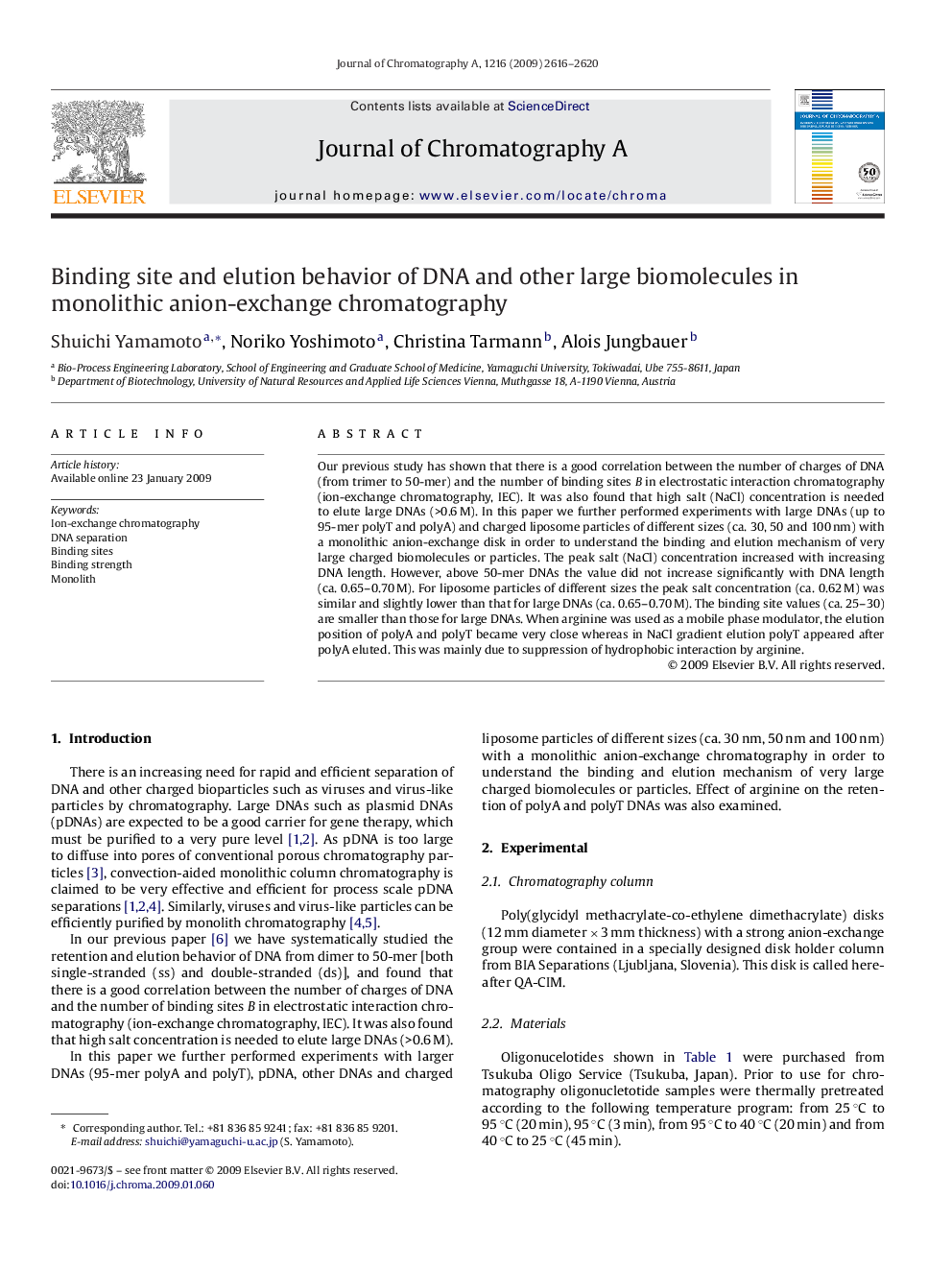| Article ID | Journal | Published Year | Pages | File Type |
|---|---|---|---|---|
| 1207090 | Journal of Chromatography A | 2009 | 5 Pages |
Our previous study has shown that there is a good correlation between the number of charges of DNA (from trimer to 50-mer) and the number of binding sites B in electrostatic interaction chromatography (ion-exchange chromatography, IEC). It was also found that high salt (NaCl) concentration is needed to elute large DNAs (>0.6 M). In this paper we further performed experiments with large DNAs (up to 95-mer polyT and polyA) and charged liposome particles of different sizes (ca. 30, 50 and 100 nm) with a monolithic anion-exchange disk in order to understand the binding and elution mechanism of very large charged biomolecules or particles. The peak salt (NaCl) concentration increased with increasing DNA length. However, above 50-mer DNAs the value did not increase significantly with DNA length (ca. 0.65–0.70 M). For liposome particles of different sizes the peak salt concentration (ca. 0.62 M) was similar and slightly lower than that for large DNAs (ca. 0.65–0.70 M). The binding site values (ca. 25–30) are smaller than those for large DNAs. When arginine was used as a mobile phase modulator, the elution position of polyA and polyT became very close whereas in NaCl gradient elution polyT appeared after polyA eluted. This was mainly due to suppression of hydrophobic interaction by arginine.
